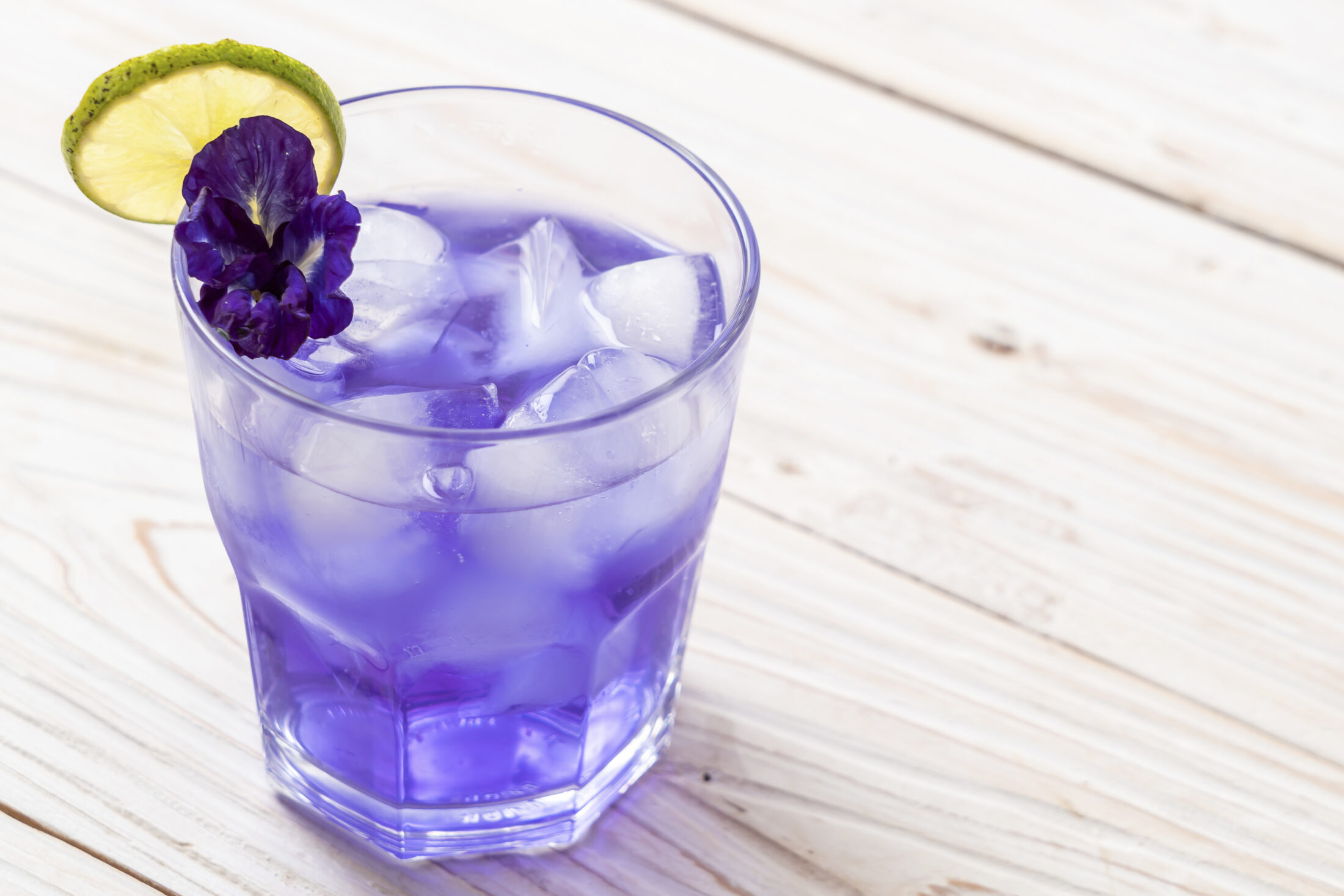Turns out this savvy color-changing drink has some health benefits to it too!
 With coffee shop culture and bubble tea shops enjoying more popularity than ever, cafes have been concocting more new drinks to keep up with the competition. If you’ve heard of butterfly pea tea, you’ll know about its ability to turn from blue to purple with just the squeeze of a lemon. Turns out this fascinating drink has been enjoyed in South East Asia for centuries, and has a few benefits too beyond its color-changing tricks. Here’s everything you need to know about this savvy new drink.
With coffee shop culture and bubble tea shops enjoying more popularity than ever, cafes have been concocting more new drinks to keep up with the competition. If you’ve heard of butterfly pea tea, you’ll know about its ability to turn from blue to purple with just the squeeze of a lemon. Turns out this fascinating drink has been enjoyed in South East Asia for centuries, and has a few benefits too beyond its color-changing tricks. Here’s everything you need to know about this savvy new drink.
 What’s butterfly pea?
What’s butterfly pea?
The butterfly pea plant also goes by the names Clitoria ternatea, Asian pigeonwings, or blue pea. It’s found in Southeast Asian countries such as Thailand, Malaysia, and the Philippines, and is known for its vibrant blue flowers.
All that color isn’t just for show. It can be used as a natural food dye, and even for dying clothing (think tie-dye shirts!). In Malaysia, it’s traditionally added to white rice to give it a pleasant, blueish tint, for a dish called nasi kerabu. In Burmese and Thai cuisines, the flowers are even fried to be eaten. Who knew flowers could be such a culinary treat!
Its claim to fame lies in the fact that it can change colors too. Steep in hot water and with tea leaves to create a blue tinted tea, with a gentle earthy and woody taste. When you add lime or lemon juice to increase its acidity, butterfly pea tea turns purple with the change in pH level (take that for a mood ring!).

Butterfly pea tea health benefits
-
Fights cancer
You know how grapes and blueberries are raved about for their nutritional benefits? That’s due to the blue pigment in their skin that has antioxidant properties, called antho
cyanins. Anthocyanins are found in butterfly pea flowers too, and may have anti-cancer properties.
-
Anti-inflammatory
Excess inflammation can lead to a range of chronic health issues such as arthritis and heart disease. Butterfly pea flower petals have actually been shown to reduce inflammation, suggesting that they may be beneficial in preventing chronic inflammatory diseases.
-
Boosts memory
Butterfly pea tea has been referred to as a nootropic, which is a substance that may help improve cognitive functions such as memory and motivation.
-
Caffeine-free
Caffeine has its benefits too, but for those of you who are caffeine-sensitive or can’t have caffeine
in your diet, butterfly flower tea could be a refreshing alternative.
 How to make butterfly pea tea
How to make butterfly pea tea
Since butterfly pea tea is a tisane, you can prepare it as you would a chamomile or any herbal tea blend. If you select a blend of butterfly pea tea that contains tea leaves or powder in it too, create the blend according to the instructions on the label.
- Heat water until it’s boiling. Let it cool for a minute as you scoop the tea out.
- Scoop 1 tablespoon of the dried butterfly pea flower powder (or 3 dried flowers) into a cup.
- Pour the hot water over the powder and let it steep for a few minutes.
- Add a tablespoon of honey and a squeeze of lemon juice for flavor, and for major mood ring vibes!
Best butterfly pea tea blends
Bleu Hibiscus from Tea Forte
Love fruity-flavored teas? This blend of butterfly pea flower tea is caffeine-free but still packs a punch of fruity flavor with a tart finish. That’s thanks to the addition of apple and orange peel to the blend that make for an invigorating taste.
Dried Butterfly Pea Blue Tea from Doi Thai
Prefer to flavor your own tea? Try these dried butterfly pea flowers for a light flavor and a gorgeous floral presentation.
Blue Matcha from Zi Chun Tea
Want to make an impressive latte or mix your own cocktail? This powder form still retains the brilliant color of the flower petals while being more convenient to mix into blended drinks, iced drinks, or even food. Do note that this product doesn’t contain any matcha in it, but is a great caffeine-free alternative!
With its gorgeous visuals and range of health benefits, butterfly pea tea makes a great option for DIY enthusiasts who prefer a natural dye. Impressive your house guests with this mood ring in a drink, or use it in your other DIY projects as a natural colorant. We’re so excited this tea from Southeast Asia has been trending, and can’t wait to hear about your new concoctions with it!



